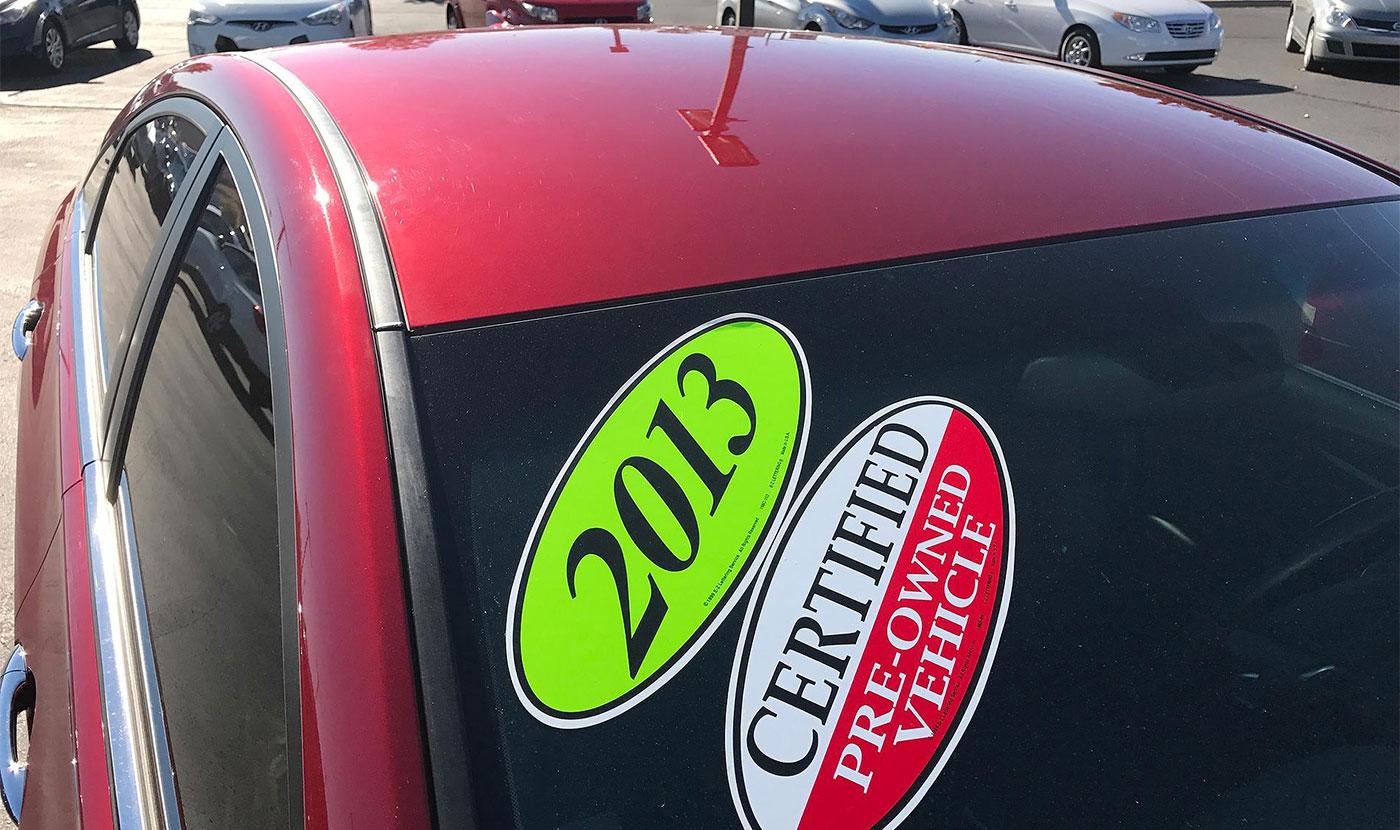
The average used car lost 17 percent of its value in the past 12 months, dropping from $18,400 to $15,300, according to data from Black Book, an auto analytics company. Photo credit: DAVID PHILLIPS
Car sales in the U.S. have been rising for seven consecutive years now, and it’s denting the value of whatever is currently parked in your garage or driveway. With so many new cars rolling out of dealerships lots and instantly becoming used cars, the secondary market is glutted and the pace of depreciation is rapidly accelerating.
Your not-that-old car might not be a clunker quite yet, but it’s probably a lot closer than you think.
The average used car lost 17 percent of its value in the past 12 months, dropping from $18,400 to $15,300, according to data from Black Book, an auto analytics company. That annual depreciation figure has been increasing steadily, too. The average used car today depreciates nearly twice as fast at it did in 2014, when the annual rate was just 9.5 percent.
“We’ve got ourselves in an oversupply situation,” said Jim Hallett, chief executive officer of KAR Auction Services Inc., which sells about 5 million used cars every year. “Nobody is interested in stockpiling inventory right now.” Translation: If you’re trading in a used car, don’t expect to get much of a deal.
Certain segments are shedding value even more quickly. Subcompact cars, such as the Honda Fit, and large sedans, such as the Chevrolet Impala, are depreciating faster than average. Big SUVs, vans, and pickups are holding their value a little better, and imports tend to drop more quickly than domestic models.
The problem, of course, is supply. Seven consecutive years of increasing U.S. auto sales have put a glut of vehicles on the road. What’s more, an increasing share of those sales came with a lease, so there’s now a rising tide of machines flowing back onto the market when their three-year contracts run out.
Automakers, having added manufacturing capacity, are also offering larger incentives on new vehicles just to maintain their record sales momentum. That puts downward pressure on the entire market, according to Hallett, even for used cars.
Consequently, the number of drivers who are upside down on their car loans is surging. Americans are paying ”or trying to pay” 108 million auto loans at the moment, according to the most recent Federal Reserve data. That represents roughly half of licensed drivers in the U.S. At the same time, 14 percent of Americans have a negative net worth. Among those who have more debts than assets, the Federal Reserve says auto loans make up between 10 percent and 23 percent of their total financial obligations.
Not surprisingly, KAR Auctions is seeing a rising number of repossessions. The company expects nearly 2 million vehicles to be seized by lenders this year and added to the used-car market, up from 1.1 million at the nadir of the last recession.
The increasing pace of depreciation is also bad news at the corporate level. Companies with huge fleets of cars and trucks ”think dealerships and rental chains” are seeing their balance sheets tick down by the day. Consider Avis Budget Group: In the quarter ended June 30, the rental-car empire managed to rent more cars than in the year-earlier period, and at fairly stable prices. Yet its profit dropped 92 percent as it struggled to sell vehicles it wasn’t using. Expenses tied to vehicle depreciation and lease charges increased 12 percent in the quarter.
Hallett at KAR Auction said many fleet managers are in a similar pickle. At Hertz Global Holdings, for example, depreciation per vehicle was up 27 percent in the recent quarter; at the time, Hertz had 500,000 vehicles. “We call it losing money by volume,” Hallett said.
Avis, in response, has resorted to selling more cars directly to consumers, cutting out the middleman at dealerships to realize slightly higher prices. And it’s buying fewer 2018 models as it gears up for next year.
The upside is that America is in the midst of a buyer’s market for used vehicles. In 2012, the average three-year-old vehicle was selling at 26 percent off its original sticker price on Cargurus.com, an online platform listing some 2.5 million vehicles. A three-year-old car is currently trading at a 34 percent discount from the sticker price, said Cargurus spokeswoman Amy Mueller.
A cheap used car hasn’t been this cheap in quite some time.
[“Source-autonews”]
